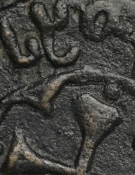
Somkhiti (Georgian: სომხითი, [somχitʰi]) was an ambiguous geographic term used in medieval and early modern Georgian historical sources to refer to Armenia on one hand and to the Armeno-Georgian marchlands along the river valleys of Debed and Khrami on the other hand. In the 18th century, Somkhiti was largely replaced with Somkheti (Georgian: სომხეთი, [sɔmχɛtʰi]) as a Georgian exonym for Armenia, but it continued, for some time, to denote the frontier region which is currently divided between Lori, Armenia, and Kvemo Kartli, Georgia. This patch of land was sometimes referred to as "Georgian Armenia" in the 19th-century European sources.[1]
- ^ "Georgia", in Encyclopædia Metropolitana, ed. by Edward Smedley, Hugh James Rose and Henry John Rose (1845), p. 538.